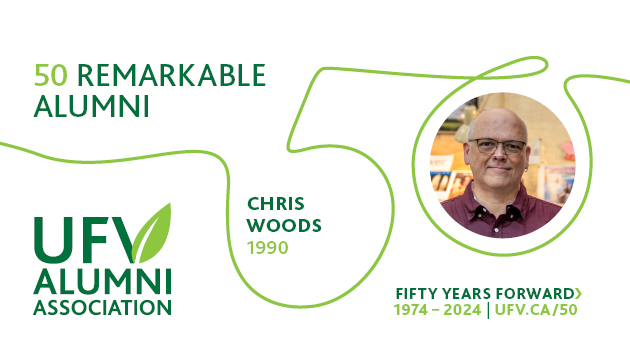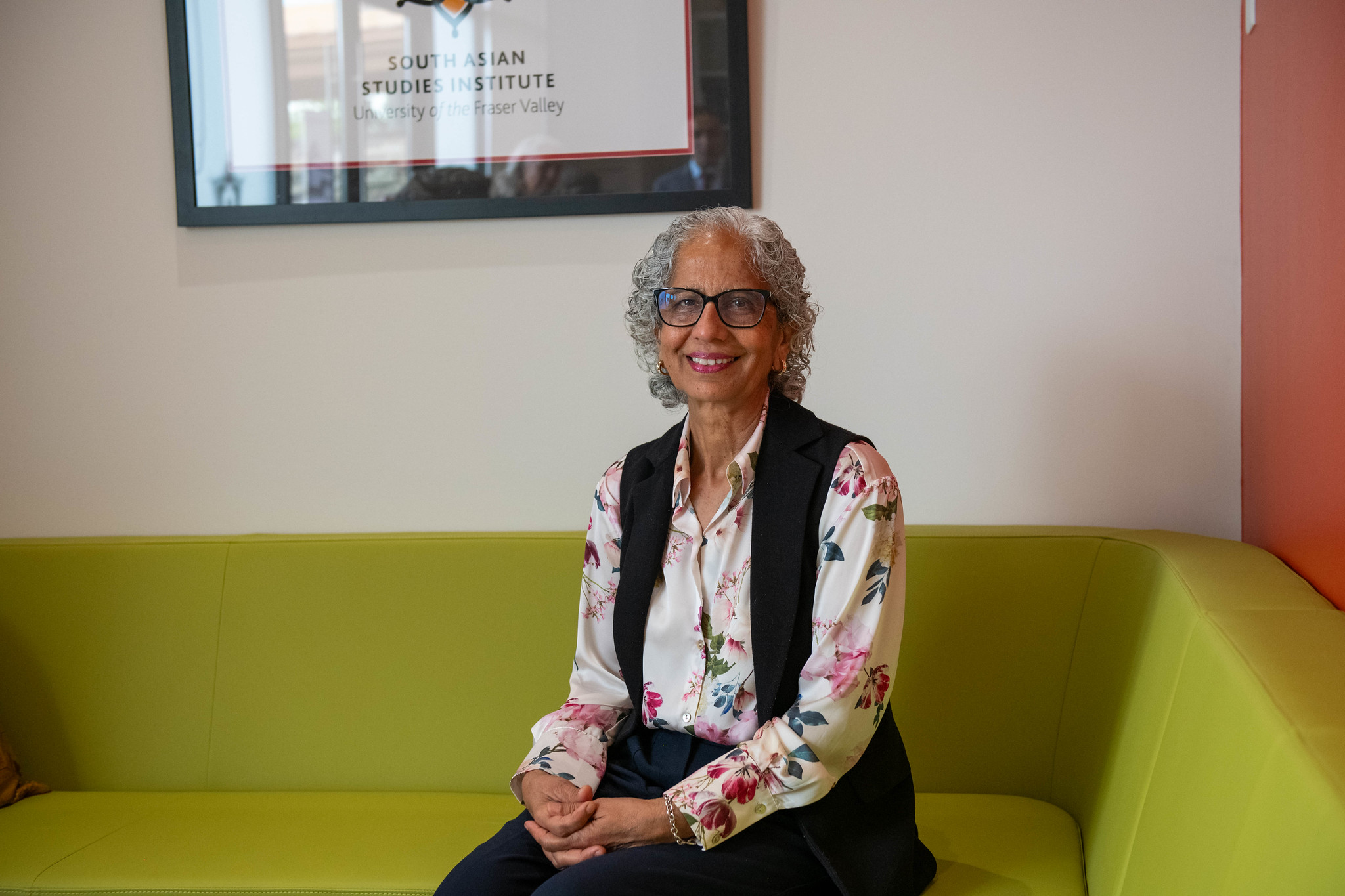50 Remarkable Alumni: Chris Woods’ artistic vision endures decades after early fame
Some artists struggle for years in obscurity. A few find fame and glory young, their talents celebrated, their work snapped up by collectors who pay top dollar to acquire a piece or two.
Chris Woods falls into that latter category; his extraordinary talent gained attention just as he was beginning his career.
Having exhibited in more than 20 solo shows and appearing in group shows in Canada and the United States, his work is found in numerous public and private collections worldwide. He is well known for his photo-realist style and visual commentary on consumer culture as his art captures the essence of pop culture in the late 20th century and the new millennium. It blends the consumerism of convenience stores and fast-food restaurants with sacred religious artistic traditions; in this way, Chris creates his own unique take on hyper-realism. His 1997 painting McDonald’s Nation has become a symbol for the global anti-consumerism movement.
His art is inspired in part by the rich education in art history he received taking classes with Rory Wallace at Fraser Valley College in the late 1980s. “Looking back to my time as a student, Rory was a great supporter, a guiding light,” he says. “He really appreciated art as an academic, but he could help us engage with it from a human perspective. He really brought art to life for me.”
But the career of an artist can be long; it’s challenging to maintain a peak for decades, especially in the world of art. The type of buyer who could afford Chris’s art was hard to find after the economic crash of 2008, and to this day, the market for his work hasn’t bounced back.
A setback to be sure, but that hasn’t stopped Chris from being an artist, as he constantly dreams of painting and continues to think about new ideas. He also keeps busy with private commissions, including a recent friends-and-family portrait for a benefactor, now owned by the Kamloops Art Gallery.
In the interest of helping to support his family during the downturn, Chris switched gears, applying his talents to the art of tattooing. He opened a commercial space and got to work building his client base.
“Tattooing re-lit a fire in me creatively,” he says. “It’s a very fundamental human activity. Drawing pictures is one of the things that make us who we are. And tattooing is a good way for an introvert like me to maintain a thread of connection to other people, whereas when I’m a studio artist, I work at ease in isolation. I thought it would be a challenge to work with clients, but it’s been satisfying to collaborate, share ideas, and have them express their vision.”
Then COVID-19 hit — not a good time to run a business that involved close personal contact. Chris retreated from tattooing, while also dealing with his own health issues. Now he’s slowly rebuilding, preparing his home studio to double as a tattoo shop.
And he’s incubating ideas for his next series of paintings. Once again, it will involve juxtaposing modern pop culture with old traditions.
“The title is Job’s Children,” he says. “Like the biblical Job, although it’s also a sly reference to Steve Jobs. My subject is smart-phones as holy object and doorway to the complexities of the human mind.”
Chris plans to employ gilding (decorating some or all parts of the painting with gold — in leaf or powder form) and traditional gesso (a plaster-like material used in the foundation of paintings) panels.
As he ponders his next works and prepares to relaunch his tattooing business, Chris is grateful for the support of local and global artist friends, particularly Chris Friesen, an associate professor of visual arts at UFV.
“The support and friendship of the other Chris has meant a lot to me,” he says. “He has done a lot to keep me connected to the world of other artists.”
Through it all, his love for art endures.
“I’m a scientific and skeptical guy, not generally a person of faith,” he says. “Really appreciating a masterpiece, such as Melville’s great novel Moby Dick, brings me a sense of the divine and takes me to hidden rooms in my mind that give me a reason to keep creating.”
More than 50,000 people have graduated from UFV since 1974. Over the next year, we’ll be introducing you to 50 remarkable alumni.
If you know a remarkable UFV grad that we should feature, nominate them today.






